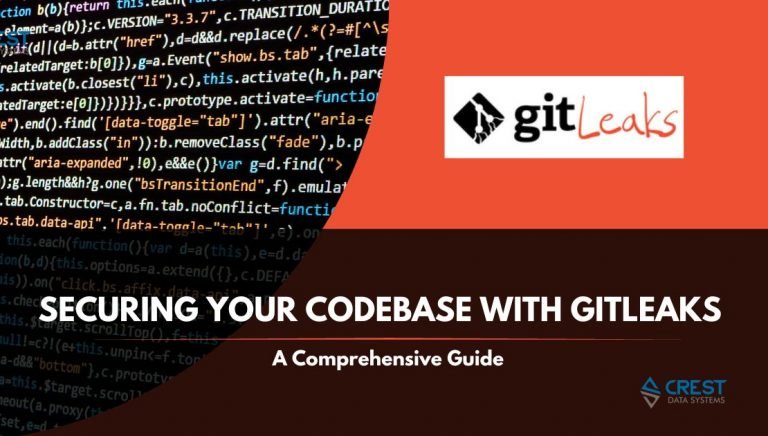Securing Your Codebase with GitLeaks: A Comprehensive Guide
Introduction
As software developers, we all know the importance of keeping our codebase secure. One of the most critical steps in securing your codebase is to ensure that sensitive information, such as passwords and keys, is not accidentally committed to your code repository. This is where GitLeaks comes in.
What is GitLeaks?
GitLeaks is an open-source tool that scans your code repository for sensitive information that may have been accidentally committed. It scans your codebase for various types of sensitive information. These secrets could be passwords, API keys, tokens, private keys or suspicious file names, or file extensions like id_rsa, .pem, htpasswd.Furthermore, gitleaks can scan your whole repository’s history with all commits up to the initial one. This allows you to take immediate action to remove sensitive information and secure your codebase.
How Does GitLeaks Work?
GitLeaks works by scanning your code repository for files that match a set of predefined patterns. These patterns are designed to match various types of sensitive information, such as password and key files. Once GitLeaks finds a match, it alerts you, and you can take action to remove the sensitive information.
Installing and Configuring GitLeaks
GitLeaks is a command-line tool that can be easily installed on your development machine. It requires Python 3.6 or higher and can be installed using pip. Once you have installed GitLeaks, you will need to configure it to scan the code repository that you want to secure. This is done by creating a configuration file that specifies the location of your code repository and the patterns that GitLeaks should scan for.
# MacOS
brew install gitleaks
# From Source
git clone https://github.com/zricethezav/gitleaks.git
cd gitleaks
make build
Running a Scan
Once you have installed and configured GitLeaks, you can run a scan by executing the following command:
Usage:
gitleaks [command]
Available Commands:
| Command | Description |
|---|---|
| completion | generate the auto completion script for the specified shell |
| detect | detect secrets in code |
| help | Help about any command |
| protect | protect secrets in code |
| version | display gitleaks version |
Get all the available commands
Gitleaks –help
Detect the secrets in code base
gitleaks detect –report-path gitleaks-report.json –no-git
This will scan the current code repository for sensitive information. If GitLeaks finds any sensitive information, it will alert you and provide the file name and line number where the sensitive information was found. You can view the detailed report in the gitleaks-report.json file. The secrets are detected by the predefined rule. You can definitely add the new rule in the gitleaks.toml file.You can proactively identify and remediate potential security vulnerabilities in your codebase pre-commit hook
gitleaksignore
False positive findings can be ignored by creating a .gitleaksignore file at the root of your repo. This file will help to ignore the false positive findings from the repo which a developer would like to keep as part of the codebase.
Conclusion
GitLeaks is a powerful tool that can help you keep your codebase secure by alerting you to any sensitive information that may have been accidentally committed. By installing and configuring GitLeaks, you can ensure that your codebase is secure and that you are aware of any sensitive information that may be present. Refer source for more information.
Author
NADIR RIYANI
Nadir Riyani is a Technical Project Manager at Crest Data, bringing over 15 years of experience in software development to his role. He has a proven track record of delivering successful software products across a range of domains, including Fintech, security, manufacturing and transportation. At Crest Data, Nadir has worked extensively with cloud providers and frameworks such as AWS, Azure, GCP and Splunk.


